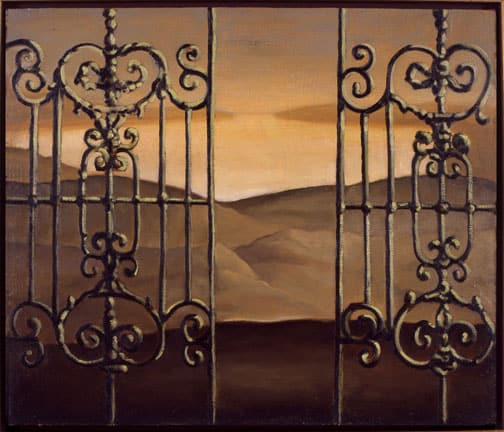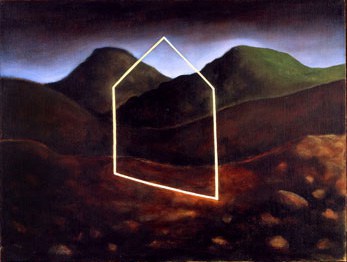
David Keeling was born in Launceston in 1951, and now lives and works in Hobart. He studied a Bachelor of Visual Arts at the Tasmanian School of Art, Hobart and a Master of Fine Art at RMIT, Melbourne. Keeling is widely recognised for his landscape paintings, through which he considers the ongoing flux of our presence in, and impact upon, the natural environment.
Throughout his practice, Keeling has explored the conflicting priorities of nature and culture; a significant consideration of life in Tasmania. As a body of work, Keeling’s paintings give insight into the Tasmanian landscape, tracing some of the social, cultural and ecological circumstances it has seen unfold. The perspectives of the landscape Keeling has considered have been both contemporary and historic, from elements of the sublime, the romantic and the nostalgic, to the familiar banality of our everyday urban surroundings. His practice is encompassed by the belief that we must move beyond these ‘comfortable’ views of our surrounds if we are to have a meaningful impact on the preservation of our environment in an increasingly industrialised world.
Keeling has stated that for him the process of painting is contemplative, this spirit of contemplation being extended to the viewer, as the impact of each work is heightened by its imbued ambiguity. Earlier in his practice, Keeling encouraged audiences to consider the way they view their natural surroundings, discouraging an overly romanticised perspective of the landscape, without denying its compelling beauty and awe. More recently, Keeling has presented the landscape bounded by the practical necessities of the man-made, striking the balance between an appreciation of beauty and an awareness of the impacts of our everyday lives on the environment. In these more recent works, Keeling has moved away from depicting more generic, sweeping vistas, to portrayals of places we encounter every day. Throughout his practice however, the artist has consistently incorporated into the landscape, elements that literally or symbolically connote a human presence.

The Devonport City Council Permanent Collection holds several of Keeling’s works, including Frame 1992 and Headland 1995, which was completed in the mid-1990s, following the artist’s residency at the Australia Council London studio. Headland is dominated by a pair of wrought iron gates, slightly ajar, framing a nonspecific golden hillside. Keeling often featured gates in his work during this period, ‘in reference to our rich heritage of wrought iron work’. This painting also connotes the imposition of people into the pristine environment, while referring to issues of land ownership.
Like Headland, Frame also depicts a nonspecific landscape, with a luminous yellow shape seemingly floating in the centre of the hillside scene. This narrow shape recalls the simplified outline of a house in a child’s drawing, and while in some ways unobtrusive, connotes man-made structures. Despite its small ‘footprint’, this form dramatically alters and disrupts the outlook. In Frame, Keeling has depicted the landscape from an aerial perspective, ‘as if the viewer were floating over the vista’. These elements of the surreal in early works, such as those in the DCC Permanent Collection, conjure the feeling of an unnerving intrusion into the landscape, which reflects Keeling’s aim to unsettle our ‘comfortable’ views of the environment we continue to impact upon.
-Erin Wilson, Curator of Collections
You can view more of David Keeling’s works here